A detailed look at the more unusual and less common types of eczema
Eczema commonly presents in primary care. Most eczema patients can be adequately managed in this setting without the need for referral to secondary care. Informed and appropriate prescribing should give excellent results for most patients.
The terms ‘eczema’ and ‘dermatitis’ are used interchangeably to describe inflamed skin. Eczema nearly always itches.
To get a good understanding of the eczemas the classification in Box 1 is helpful. Endogenous suggests the disease process is driven from within the body, while exogenous suggests direct contact with the causative agent. Except for seborrhoeic dermatitis, the eczemas listed have common key features. These features determine the basic components of any management plan we draw up to treat these eczemas.
These features include:
▶ A background dry skin with a poor skin barrier. To manage this, avoidance of irritants and regular emollient applications are key.
▶ Skin inflammation with erythema and pruritus. Topical corticosteroids (TCS) and tacrolimus form the cornerstone of anti-inflammatory therapy.
▶ A susceptibility to secondary bacterial, viral, and fungal infection, which in turn cause flaring of the eczema. Antibiotic, anti-fungal, anti-viral or anti-septic measures may be indicated.
I have found that understanding this classification and applying these management principles are a great help in getting a handle on these eczemas.
Space does not allow the discussion of the two most common eczemas – atopic eczema and seborrhoeic dermatitis.
Emollients
A dry background skin and a defective skin barrier function are primary underlying problems in the eczemas. Irritants need to be avoided. Common irritants include soaps, shower gels, shampoos, detergent, washing up liquid, polish, and sweat. Gloves, if used, need to be of good quality (with no holes). Cotton gloves should be worn under waterproof gloves to prevent sweat accumulating and changed regularly. When washing hair in the shower suds should be allowed run down the plughole directly, avoiding contact with the body as much as possible. If taking a bath, the hair should be washed separately, not allowing bathing in water mixed with shampoo. For the body, a liquid moisturiser should be substituted for soap and shower gel. Following a shower or bath the skin should be moisturised. A regular moisturising regimen, outside bath or shower time, should be started.
Emollients are greasy substances that form an artificial barrier on the skin. They come as lotions, creams, and ointments, depending on their lipid content. An ointment is more effective than a cream, which in turn is more effective than a lotion. Unfortunately, when it comes to patient acceptability the reverse is true. An ointment formulation is recommended, twice daily in the first instance, but be ready to compromise. The best moisturiser is the one the patient finds acceptable and will use.
A useful compromise might be an ointment last thing at night with a more acceptable cream during the day. For some years now aqueous cream has been out of favour due to the irritating effect of its high sodium laurel sulphate concentration.
Topical corticosteroids
TCS have potent anti-inflammatory effects and are first-line therapy for acute flares of eczema. Many patients, carers and doctors have negative feelings and beliefs regarding the use of TCS, so called ‘steroid phobia’. Studies have shown the most frequent causes for concern are skin thinning and the risk of systemic absorption. These need to be discussed at the time of prescribing, with reassurance that, with appropriate choice of potency, time scale, and monitoring, TCS are safe.
Side-effects of TCS
▶ Skin atrophy: Can be avoided by matching the potency of the TCS to the patient’s age and the area being treated. Striae are generally irreversible. Occlusion, if used, should be for a maximum of five days.
▶ Folliculitis or steroid acne: Like moisturisers, TCS should be applied in the direction in which the skin hair lies to reduce the risk of opening up and plugging follicle openings.
▶ Periorificial dermatitis: Always consider this possibility if eczema near the periorificial areas on the face fails to clear, despite ongoing TCS application. Small papules and pustules on an erythematous background are a clue. Patients may experience a flare on stopping the TCS, with stinging and burning, which is relieved by restarting the TCS. The patient can end up in a never-ending vicious circle.
▶ Tachyphylaxis: With tachyphylaxis you get a reduction in effectiveness of the TCS with ongoing use. To reduce the amount of TCS being used, make sure the patient is using moisturisers and try maintenance treatment of TCS, as outlined below.
▶ Glaucoma and cataracts: Are rare, but mean that we should not employ TCS on the eyelids beyond a short course of hydrocortisone. Tacrolimus does not cause skin atrophy or ocular problems and is usually very effective for eyelid eczema.
▶ Contact allergic dermatitis: Is not that uncommon. Mild and moderate potency TCS are more a risk. One needs a high index of suspicion, as ongoing application of the TCS may suppress itch and redness, but the eczema does not clear. Patch testing may help. Stopping the TCS and substituting moisturisers may sort the problem.
Matching TCS potency to the site being treated
▶ Face and neck in children – use mild potency generally. For severe flares, use moderate potency, reviewed after five days.
▶ Face and neck in adult – use mild or moderate potency generally. For severe flares use potent, reviewed after five days.
▶ Body and limbs in children – use moderate or mild potency generally. For severe flares use potent, reviewed after five days.
▶ Body and limbs in adult – use moderate or potent strength. For severe flares use very potent, reviewed after five days.
| Box 1: Classification of the eczemas | ||
|---|---|---|
| Endogenous |
► Seborrhoeic eczema
► Varicose eczema ► Lichen simplex ► Juvenile plantar dermatosis ► Secondary eczema
► Atopic eczema
► Asteatotic eczema ► Discoid eczema ► Pompholyx eczema |
|
| Exogenous |
► Contact irritant dermatitis
► Photodermatitis
► Contact allergic dermatitis
|
|
| Box 2: Classification of TCS |
|---|
|
► Mild (Class I) – Hydrocortisone ► Moderate (Class II) – Clobetasone butyrate (Eumovate), Aclometasone dipropionate (Modrasone) ► Potent (Class III) – Betamethasone Butyrate (Betnovate), Betamethasone dipropionate (Diprosone), Hydrocortisone butyrate (Locoid), Mometasone furoate (Elocon) ► Very potent (Class IV) – Clobetasol propionate (Dermovate) Note: Class IV TCS are 600 times more potent than Class I |
| Box 3. Steps to increase the anti-inflammatory effects of TCS |
|---|
|
► Use an ointment formulation, rather than creams, when treating dry eczema. Ointments moisturise and increase penetration of TCS ► Covering the TCS with an occlusive dressing or clingfilm increases the potency by a factor of five. Because of the risk of skin atrophy, occlusion should be limited to five days ► Soaking the involved skin in water hydrates the skin. To increase penetration, the TCS should be applied immediately after rapid drying ► If a lower potency TCS is not sufficiently effective, a switch to a more potent formulation may help ► Pulse dosing (BD w/e only)/proactive TCS |

The eczema was present on one ear only, affecting the side on which the patient slept on. He was allergic to lavender oil sprinkled on the pillow to help with sleep. As in this case, think of exogenous causes when eczema presents asymmetrically.
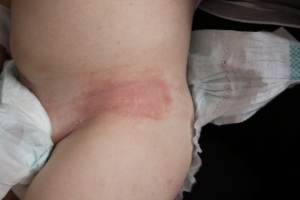
The eczema is confined to the area of skin that came in contact with the adhesive of the nappy. The outline of the rash matches the area in contact with the allergen. This used to be called the ‘Lucky Luke’ sign, after a little boy, dressed as a cowboy, in a comic magazine. He had a holster on each hip.
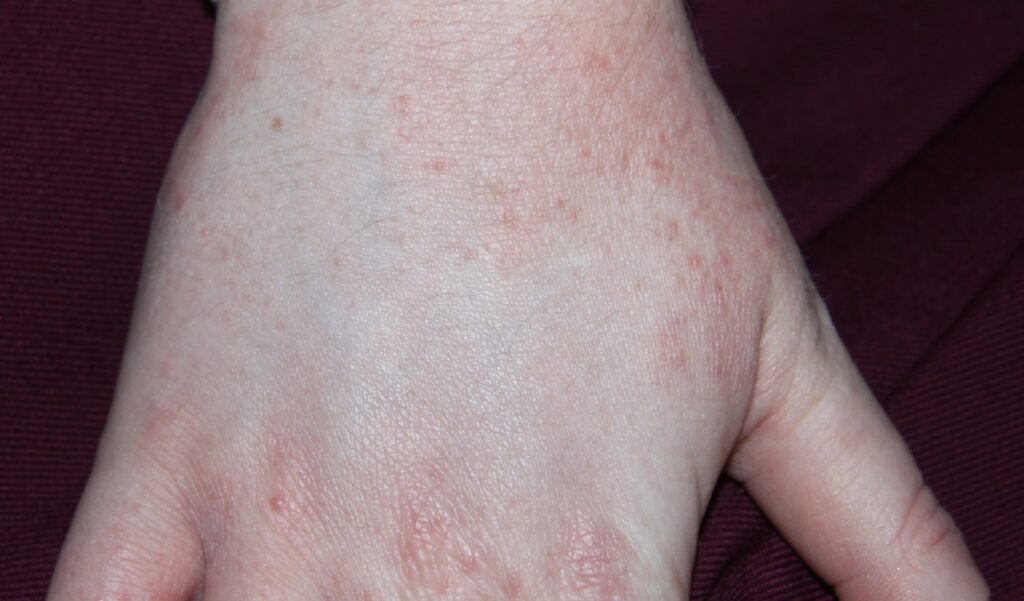
Allergy in not the problem here. Repeated exposure to irritants, especially with hand washing, exposes the skin to cumulative damage. Once a certain threshold of irritation is reached eczema develops. Note the prominence of the rash on the dorsum of the hand and interdigital webs. Irritants may collect under rings causing ‘ring eczema’. Irritants are by far the commonest cause of contact hand eczema, accounting for 90 per cent. Allergens account for the remaining 10 per cent. Those with a history of atopic eczema are at particular risk of irritant contact eczema.

Discoid eczema tends to develop on dry background skin. It starts as an area of itchy, localised papules.
More and more papules develop and coalesce, eventually forming the disc shaped areas of eczema. It is more common in middle-aged individuals and favours the limbs.

Repeated scratching on the anterior shins has led to the development of thickened eczema. It generally
occurs on skin that is easily accessible for itching, such as the extensor surfaces of both upper and lower limbs and the occiput. It is increasingly found on the genital areas in both males and females. It may be challenging to control and initially a very potent TCS may be needed to suppress it on the limbs.

Pompholyx is also known as dyshidrotic eczema, although it is now accepted to have nothing to do with sweating. Note the acute, vesicular eruption on the fingers. It involves the hands and less frequently the feet. If vesicles or bullae become purulent, suspect bacterial superinfection. Pompholyx needs a particular treatment approach. Potassium permanganate soaks help dry up the blistering and its antiseptic action reduce the risk of secondary bacterial infection. It will cause temporary, brown staining. After a 10-minute soak the skin is dried and a potent TCS cream applied (cream is more drying than ointment). Improvement is seen after three days at which time this regime is stopped. Treatment is continued with a potent TCS ointment plus a moisturiser.

Note the involvement of the plantar surface of the forefoot. The surface has a characteristic shiny, polished-like appearance. Fissures are common. It may be due to repeated friction from modern footwear. It is more common in boys and tends to resolve after the age of 12 years.

Note the background dry skin and the superficial fissures giving a crazy paving appearance. This
is asteatosis. Asteatotic eczema is visible as red, inflamed areas within the fissures. It can sometimes be seen in children with atopic eczema, but it is essentially a disease of older people. Winter, with people more confined indoors, with the heating on and humidity low is a high-risk time (Willian’s itch).
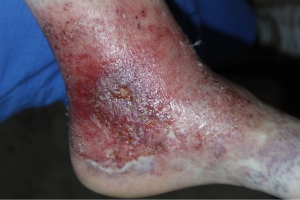
In patients with varicose insufficiency, eczema may have multiple causes – allergy to topical dressings, irritation from constant oozing, background asteatosis, and varicose insufficiency. Patients may benefit from referral for patch testing that includes the likely allergens in this group of patients. Viscopaste dressings are a common cause of contact eczema.
At these reviews the potency of the TCS might be maintained for another five days or the potency can be stepped down to a less potent formulation.
Proactive and reactive use of TCS
‘Reactive’ treatment. Traditionally TCS were started at the first signs or symptoms of a disease flare. Treatment was continued until resolution and then stopped.
‘Proactive’ treatment recognises that once a flare is brought under control and TCS stopped, recurrence is likely. Non-flared, chronic eczema may look normal and not itch, but histology shows ongoing inflammation. TCS, applied on two days each week to previously affected areas, suppress inflammation and significantly reduce the risk of recurring flares. This ‘proactive’ or ‘maintenance’ use of TCS should be combined with regular use of a moisturiser.
TCS withdrawal reactions
Stopping TCS after long-term, continuous use can lead to rebound flares. This phenomenon has led to an explosion of terms such as ‘steroid addiction syndrome’ on social media. In the UK, the British Association of Dermatologists and the National Eczema Society issued a statement acknowledging that some people have problems when they stop TCS after long-term use, including rebound erythema, soreness, itch, scaling, and swollen glands and hypoadrenalism. The UK Medicines and Healthcare products Regulatory Agency (MHRA) also highlighted a risk of withdrawal problems after stopping long-term use of TCS. Problems can occur within days of stopping, but may be delayed. Sensitive skin areas are most at risk (face, genitals). Patients should be given advice on the amount of TCS to apply and the duration of treatment. Placing TCSs on repeat prescription should be avoided.
Management strategies for TCS withdrawal following long-term use include:
1) ‘Cold-turkey’ approach, with abrupt discontinuation of the TCS. While this may lead to a more rapid resolution (one-three months), it has a greater risk of precipitating a bad flare.
2) Tapering both the potency or the frequency of application of the TCS. This may avoid or reduce the severity of rebound. This takes a longer time, up to 12 months in some instances.
Topical calcineurin inhibitors
Only one topical calcineurin inhibitor (TCI) is currently (March 2025) marketed in Ireland. Tacrolimus is approved for moderate-to-severe atopic eczema. It is often used off-label in the treatment of other eczemas and many inflammatory skin conditions. It is especially useful on the face and flexural areas, which are at risk of TCS side-effects, such as skin atrophy and striae. It not as effective on thick eczema on the trunk or limbs. Two formulations are available: Tacrolimus 0.03 per cent ointment is licensed for children over two years of age, while tacrolimus 0.1 per cent ointment is licensed for individuals over 16 years of age.
Ongoing surveillance studies have shown no increased risk of cancer with long-term tacrolimus treatment. One-in-five patients experience a stinging or burning sensation on areas of skin where it has been applied, which can be quite severe. It is almost invariably transient, lasting only a few days despite continued use. Patients should be warned about it. If not warned, many will prematurely stop the treatment. Sun protection is recommended, even though there is no evidence of increased risk of skin cancer. After applying tacrolimus, 30-60 minutes should be allowed before applying an emollient or sun protection. Guidelines generally recommend tacrolimus as second-line treatment if TCS combined with emollients are not fully effective or appropriate.
Infection
Many of the eczemas discussed in this article are more common in atopic patients. A defective skin barrier and an increased susceptibility to secondary infection result in increased rates, especially of secondary bacterial infection. Traditionally, topical and oral antibiotics were often prescribed once infection was suspected. Infection caused flaring of the eczema and antibiotics were shown to have some benefit. However, in the era of increased antibiotic stewardship, we are urged to avoid topical antibiotics and reduce our prescriptions for oral antibiotics as much as possible. Instead, the emphasis is now on getting control of eczema by prescribing TCS, as outlined above, combined with irritant avoidance and adequate moisturisation. Achieving and maintaining good disease control is the best defence against infection.
If infection is an issue and an eczema persists, despite adequate topical therapy, Staph aureus is the usual cause. Flucloxacillin, for five days, is the first antibiotic option. Clindamycin can be used in the case of penicillin allergy.
Conclusion
Hopefully, gaining an understanding of the classification of the eczemas and an appreciation of their shared pathogenesis will help you make an accurate diagnosis and formulate an appropriate treatment plan for your eczema patients.
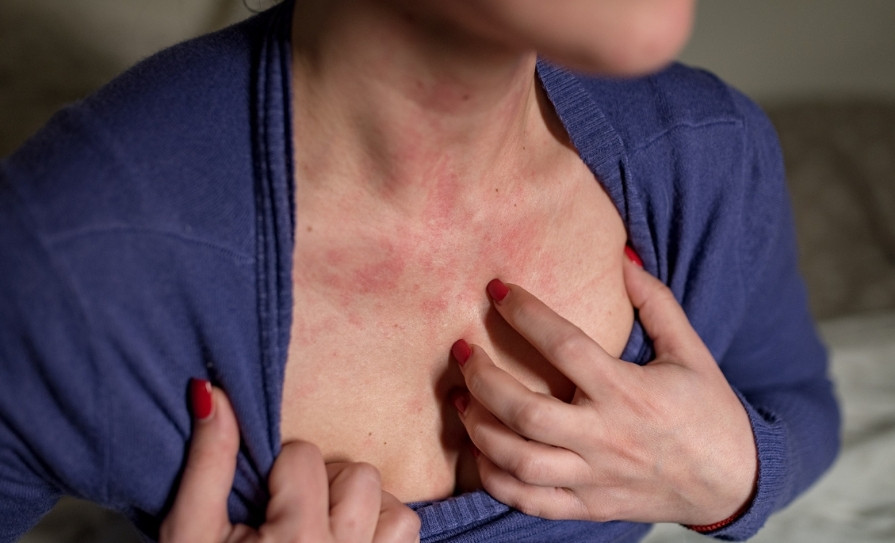
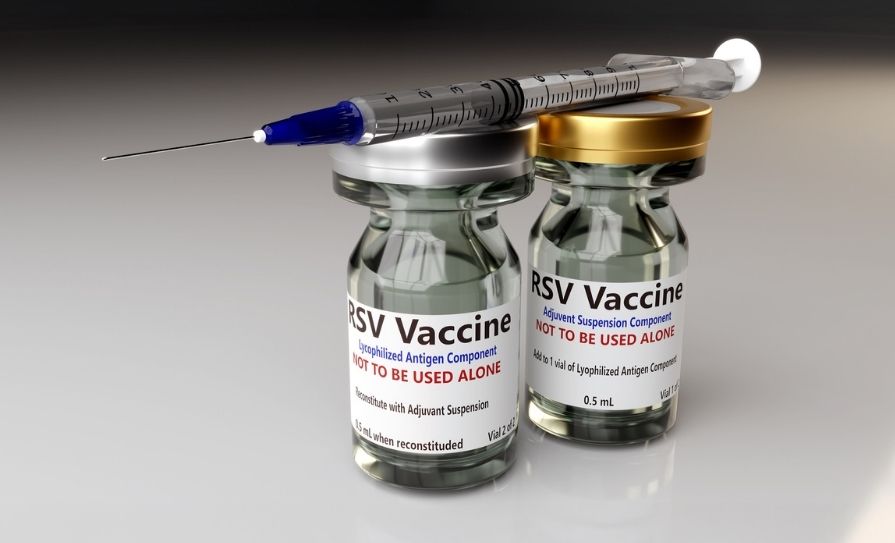


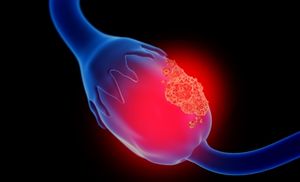



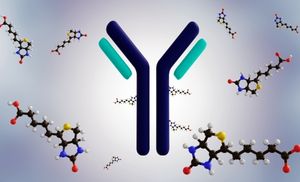




Leave a Reply
You must be logged in to post a comment.